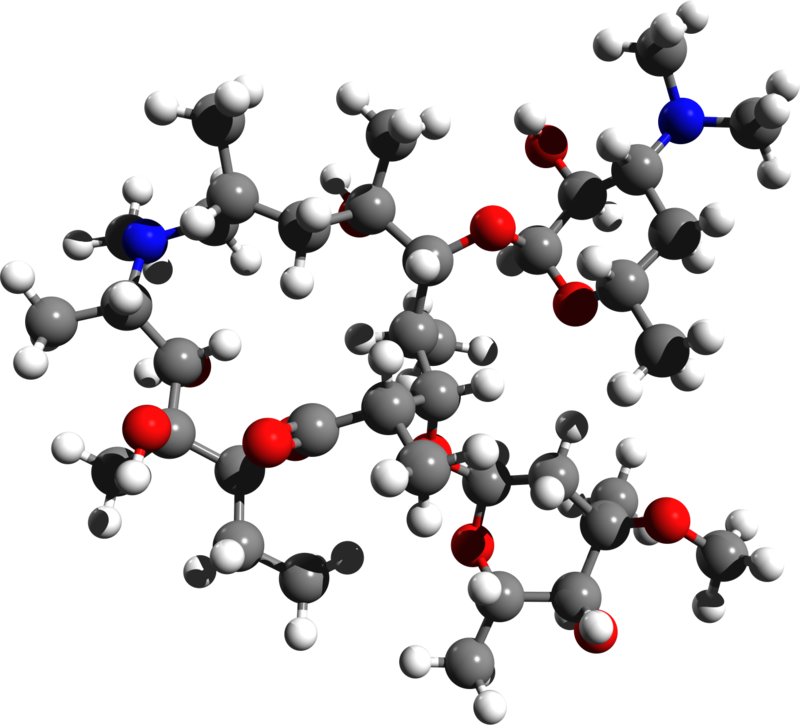Contents
Is azithromycin a broad spectrum antibiotic?
Antibiotics are generally defined as a chemical substances produced by a microorganism which has the ability to kill other microorganisms. A broad spectrum antibiotic is active against both gram positive and gram negative type of bacteria and azithromycin is considered to be a broad spectrum antibiotic. Azithromycin is the generic name for a prescription drug, but it is also available as Brand names products such as: Zithromax, Zmax, and Z-Pak.
FDA approved indications for azithromycin are:
- COPD Exacerbation
- Cervicitis
- Chancroid
- Community Acquired Pneumonia (CAP)
- Conjunctivitis, Bacterial
- Mycobacterium avium complex infection
- Otitis Media (OM)
- Pelvic Inflammatory Disease (PID)
- Skin bacterial infection
- Urethritis


Azithromycin is also commonly prescribed to treat lung and other respiratory infections, such as bronchitis, community acquired pneumonia, sinusitis, some cases of chronic obstructive pulmonary disease (COPD) and whooping cough (pertussis).
Doctors can also prescribe azithromycin for genital related infections and sexually transmitted diseases such as: gonorrhoea, genital ulcers, infections of the urethra or cervix, and severe pelvic inflammatory disease.
For the prevention of drug-resistant infections, FDA strongly recommends to the doctors to prescribe the drug only when there is a good proof, or a strong suspicion, that the infection is caused by bacteria against which azithromycin is effective.
FDA approved azithromycin in 1991 under the brand name Zithromax in 1991 and it was originally manufactured by Pfizer Pharmaceuticals.
How does azithromycin work?
Azithromycin belongs to the class of macrolide type of antibiotic. It works by inhibiting a specific type of protein which is responsible for the growth and multiplication of the bacteria. So it just stops the infection and the bacteria are killed by body’s immune system or it automatically dies. To check whether the bacteria is resistance to the azithromycin doctor may take a tissue sample, using swab from the throat or skin.
Why azithromycin is considered superior than other antibiotics?
- Anti-inflammatory properties. Macrolide antibiotics are known to inhibit cytokines and proinflammatory mediators production thereby providing an anti-inflammatory So, azithromycin is considered to be having strong anti-inflammatory activity when compared to clarithromycin and erythromycin.
- Spectrum activity. Macrolide antibiotics are active against gram-positive organisms and some extent to gram-negative The Gram-negative cell wall is complex and hard for the antibiotics to penetrate both inner and outer membranes. Azithromycin is known to show a more active effect against gram-negative organisms compared to erythromycin and clarithromycin.
- It is defined as, “The amount of drug molecule present in general circulatory system”. The bioavailability of azithromycin is 1.5 times higher than the erythromycin and clarithromycin.
- Half-life. The half-life of erythromycin is just 1 hour (short half life) and it is recommended to take four times per day. But azithromycin has the longest half life with more than 4 hours.
- After drug administration, azithromycin reaches general circulatory system rapidly and it gets circulated to various intracellular compartments in ultra fast speed.
- Side effects. Azithromycin is recently found antibiotic and it is known to show less gastrointestinal side effects compared to erythromycin. From these properties, we can conclude that azithromycin is considered to be a superior and special antibiotic.
What probiotics (yoghurt) does to us?
Probiotics are, “live bacteria which when taken in adequate amounts will enhance our immune system” is a simple definition which was coined in earlier days. From experiments and studies, it is replaced as, “Probiotics are live bacteria which increases a number of good bacteria which are killed by using antibiotics”. Yes, our body contains both good and bad bacteria. Probiotics often called as “friendly” or “good” bacteria.
Mode of action:
- Probiotics help to maintain (rebalance) normal good bacteria levels in the gut after taking antibiotics.
- Take Probiotics like a supplement not like a drug.
Choose Probiotics in such a way that it contains Lactobacillus and Bifidobacterium strains of bacteria. Here Lactobacillus is one which is found in yoghurt and fermented foods. They help in fixing diarrhoea in both adults and children and Bifidobacterium may cure the symptoms of irritable bowel syndrome (IBS). It is also found in some dairy products.
Taking yoghurt probiotics along with antibiotics
Taking Probiotics along with antibiotics is generally prescribed by any pharmacist to maintain imbalance in bacterial flora. “Yakult” is a common probiotic which is proven to contain many live bacteria and it is easily available in nearby supermarkets. Probiotics should be taken daily with breakfast and wait for minimum 2-3 hours and then you can consume antibiotic.
It is proven by FDA to take probiotic along with antibiotic to decrease the impact of many good bacteria and to maintain its habitat.
The following brands of yoghurt are popularly used as Probiotics. They are Yoplait, Chobani, Yakult, Stonyfield, and Dannon. From the above list, Dannon is found to be including some special strains of bacteria for health purpose. Bacteria species that are commonly used in Yoghurt probiotic are mentioned above:
- Yoplait:
- Lactobacillus bulgaricus
- Streptococcus thermophilus
- Lactobacillus acidophilus
- Chobani:
- Bifidobacterium bifidum
- Lactobacillus acidophilus
- Dannon
- Lactobacillus bulgarus
- Streptococcus thermophilus
- Yakult
- Lactobacillus casei
- Fage
- Lactobacillus bulgaricus
- Lactobacillus thermophilus

Important strains:
In general, from olden days widely used strain for yoghurt preparation was Lactobacillus bulgarus and Streptococcus thermophilus. Nowadays, other culture strains are added only for its taste, texture and for shelf life.
Reported studies:
These two species of bacteria are smart in surviving in the gastrointestinal tract (GIT).
- Yoghurt with these two strains is given to both patients with alcoholic and non- alcoholic liver disease patients.
- It is found that patients with non- alcoholic liver disease there is an improvement in liver enzymes levels.
- In the case of anorexia (loss of appetite for food) patients, there is activation in the immune response.
- They helped to absorb lactose in the case of lactose- intolerant patients.
- Helped in the treatment of infant antibiotic – associated diarrhoea (AAD).
Taking azithromycin along with probiotic is an advantage or disadvantage?
- A doctor or pharmacist may suggest you to take probiotic along with the antibiotic.
- Azithromycin kills harmful bacteria in the gut, but it also kills good bacteria and may disturb the gut microbial flora. Our infection may get cured but it causes side effects by diarrhoea or thrush. It can be handled only by taking an additional supplement like probiotics
- Probiotics should be taken daily with breakfast and wait for minimum 2-3 hours and then you can consume antibiotic. If taken before or after this time, antibiotics won’t affect probiotics efficacy.
- The absorption capacity of azithromycin is found to be decreased by 50% when taken with food (such as milk) and also affecting its bioavailability. Milk contains casein, calcium and magnesium which may decrease the absorption capacity of the antibiotic.
- Many antibiotics can form a soluble complex with metal ions which reduces its bioavailability. Avoid administration of azithromycin with milk products, which contains divalent ions like calcium and magnesium. These ions can interact with antibiotics which we are taking and it prevents their absorption.
- Since it is effective against the side effects of antibiotics (thrush and diarrhoea), patients will get only fewer side effects from the antibiotics. So, one can complete his/her course of antibiotics successfully with the use of Probiotics.
- Probiotics are considered to be very safe. Even if they are taken in excess amount, the only side effect of probiotic consumption may lead to bloating and no effect against diarrhoea.
- There are some suggestions that probiotics may increase the bad bacteria in the gut. But there is no experimental evidence.
- Overall taking probiotic causes fewer side effects along with the antibiotic.

“Do you take diflucan before or after antibiotics?“
“Azithromycin Rifampin interaction“
